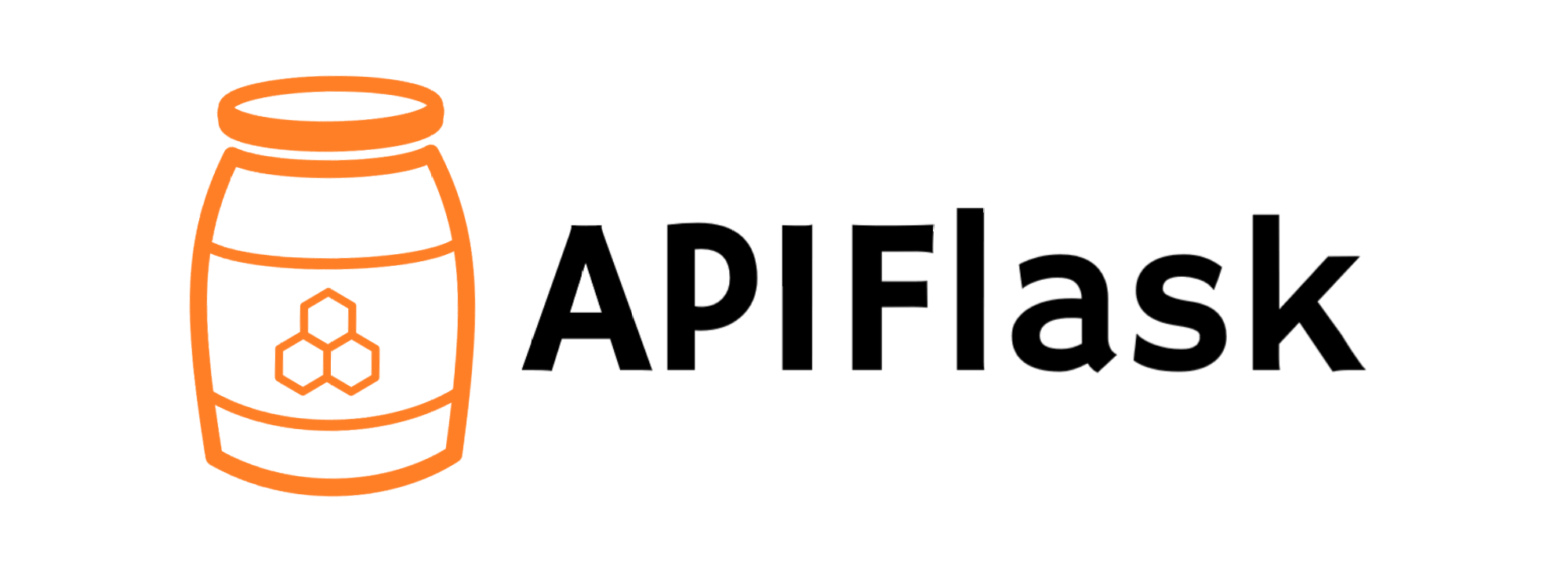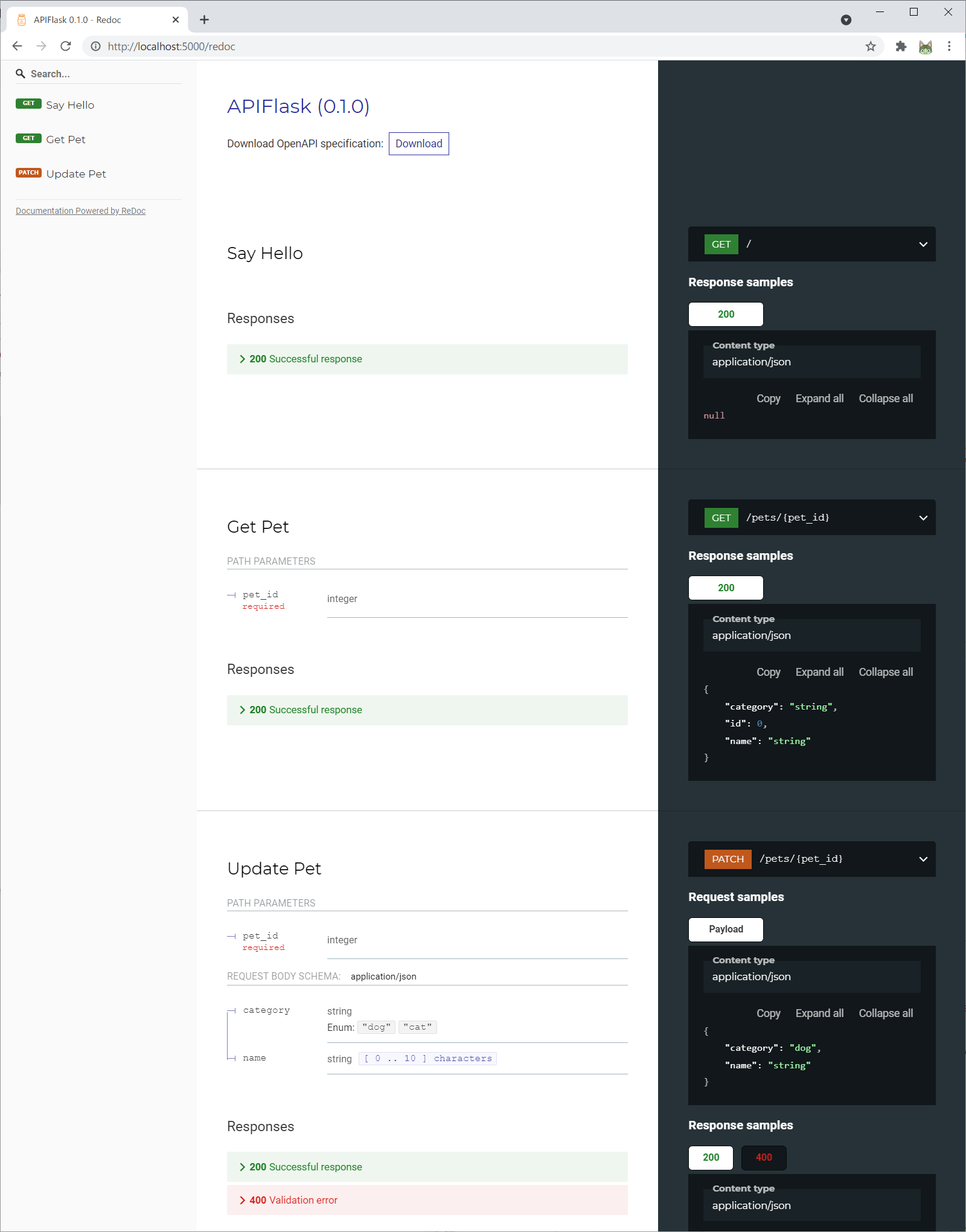欢迎参与翻译,仓库地址为:
https://github.com/apiflask/docs-zh
参与翻译的基本流程如下:
- 创建 PR 在下面列表里你想翻译的章节后添加你的名字,一次一章
- Fork 本仓库(apiflask/docs-zh),然后克隆你的 fork 到本地(将下面的
{username}替换为你的用户名):
$ git clone https://github.com/{username}/docs-zh
$ cd docs-zh
$ git remote add upstream https://github.com/apiflask/docs-zh
- 参考贡献指南搭建开发环境(跳过 fork 部分)
- 阅读《翻译指南》了解翻译要求
- 创建 branch 翻译 docs_zh/ 目录下对应的文件
- 执行
mkdocs serve预览文档并修正错误 - 提交 PR 等待审核
- Home (index.md) @greyli
- Documentation Index (docs.md) @rice0208
- Migrating from Flask (migrating.md) @z-t-y
- Basic Usage (usage.md) @Farmer
- Request Handling (request.md) @rice0208
- Response Formatting (response.md) @Tridagger
- Data Schema (schema.md) @rice0208
- Authentication (authentication.md) @z-t-y
- OpenAPI Generating (openapi.md) @rice0208
- Swagger UI and Redoc (api-docs.md) @Tridagger
- Configuration (configuration.md) @z-t-y
- Error Handling (error-handling.md) @yangfan9702
- Examples (examples.md) @Tridagger
- Comparison and Motivations (comparison.md) @Tridagger
- Authors (authors.md)
- Changelog (changelog.md)
- Contributing Guide (contributing.md)
- API Reference:
- APIFlask (api/app.md)
- APIBlueprint (api/blueprint.md)
- Exceptions (api/exceptions.md)
- OpenAPI (api/openapi.md)
- Schemas (api/schemas.md)
- Fields (api/fields.md)
- Validators (api/validators.md)
- Route (api/route.md)
- Security (api/security.md)
- Helpers (api/helpers.md)
- Commands (api/commands.md)
APIFlask 是一个轻量的 Python web API 框架,基于 Flask 和 marshmallow-code 项目实现。它易于使用,高度可定制,可搭配任意 ORM/ODM 框架,并且和 Flask 生态 100% 兼容。
APIFlask 提供了下面这些主要特性:
- 为视图函数实现了更多的语法糖(
@app.input()、@app.output()、@app.get()、@app.post()等) - 自动化请求验证和反序列化(基于 webargs)
- 自动化响应格式化和序列化(基于 marshmallow)
- 自动生成 OpenAPI 规范 (OAS,原 Swagger 规范)文档(基于 apispec)
- 自动生成交互式 API 文档(基于 Swagger UI 和 Redoc)
- API 认证支持(基于 Flask-HTTPAuth)
- 自动为 HTTP 错误生成 JSON 响应
- Python 3.7+
- Flask 1.1.0+
Linux 和 macOS:
$ pip3 install apiflaskWindows:
> pip install apiflask- 网站:https://apiflask.com
- 文档:https://apiflask.com/docs
- PyPI:https://pypi.python.org/pypi/APIFlask
- 变更日志:https://apiflask.com/changelog
- 源代码:https://github.com/apiflask/apiflask
- Issue 追踪:https://github.com/apiflask/apiflask/issues
- 论坛(英文):https://github.com/apiflask/apiflask/discussions
- 论坛(中文):https://discuss.helloflask.com/
- Twitter:https://twitter.com/apiflask
from apiflask import APIFlask, Schema, abort
from apiflask.fields import Integer, String
from apiflask.validators import Length, OneOf
app = APIFlask(__name__)
pets = [
{'id': 0, 'name': 'Kitty', 'category': 'cat'},
{'id': 1, 'name': 'Coco', 'category': 'dog'}
]
class PetIn(Schema):
name = String(required=True, validate=Length(0, 10))
category = String(required=True, validate=OneOf(['dog', 'cat']))
class PetOut(Schema):
id = Integer()
name = String()
category = String()
@app.get('/')
def say_hello():
# 返回字典或列表等同于使用 jsonify()
return {'message': 'Hello!'}
@app.get('/pets/<int:pet_id>')
@app.output(PetOut)
def get_pet(pet_id):
if pet_id > len(pets) - 1:
abort(404)
# 你也可以直接返回一个 ORM/ODM 模型类实例
# APIFlask 会将其序列化为 JSON 格式
return pets[pet_id]
@app.patch('/pets/<int:pet_id>')
@app.input(PetIn(partial=True))
@app.output(PetOut)
def update_pet(pet_id, data):
# 验证且解析后的请求输入数据会
# 作为一个字典传递给视图函数
if pet_id > len(pets) - 1:
abort(404)
for attr, value in data.items():
pets[pet_id][attr] = value
return pets[pet_id]注意:input、output、doc 和 auth_required 装饰器现在移动到了程序/蓝本实例上,
如果你使用 APIFlask 0.12 及以下版本,则需要使用独立的装饰器具体参考
这里。
你也可以通过 MethodView 编写基于类的视图(class-based views)
from apiflask import APIFlask, Schema, abort
from apiflask.fields import Integer, String
from apiflask.validators import Length, OneOf
from apiflask.views import MethodView
app = APIFlask(__name__)
pets = [
{'id': 0, 'name': 'Kitty', 'category': 'cat'},
{'id': 1, 'name': 'Coco', 'category': 'dog'}
]
class PetIn(Schema):
name = String(required=True, validate=Length(0, 10))
category = String(required=True, validate=OneOf(['dog', 'cat']))
class PetOut(Schema):
id = Integer()
name = String()
category = String()
class Hello(MethodView):
# 使用 HTTP 方法名作为类方法名
def get(self):
return {'message': 'Hello!'}
class Pet(MethodView):
@app.output(PetOut)
def get(self, pet_id):
"""Get a pet"""
if pet_id > len(pets) - 1:
abort(404)
return pets[pet_id]
@app.input(PetIn(partial=True))
@app.output(PetOut)
def patch(self, pet_id, data):
"""Update a pet"""
if pet_id > len(pets) - 1:
abort(404)
for attr, value in data.items():
pets[pet_id][attr] = value
return pets[pet_id]
app.add_url_rule('/', view_func=Hello.as_view('hello'))
app.add_url_rule('/pets/<int:pet_id>', view_func=Pet.as_view('pet'))或使用 async def(Flask 2.0)
$ pip install -U flask[async]import asyncio
from apiflask import APIFlask
app = APIFlask(__name__)
@app.get('/')
async def say_hello():
await asyncio.sleep(1)
return {'message': 'Hello!'}参考 Using async and await 了解 Flask 2.0 的异步支持。
把代码保存到 app.py,然后使用下面的命令运行:
$ flask run --reload现在访问 http://localhost:5000/docs 查看交互式 API 文档(Swagger UI):
或者你可以在创建 APIFlask 实例时通过 docs_ui 参数来设置 API 文档 UI
(APIFlask 1.1+):
app = APIFlask(__name__, docs_ui='redoc')现在 http://localhost:5000/docs 将会使用 Redoc 渲染 API 文档:
支持的 docs_ui 选项(API 文档库)包括:
swagger-ui(默认值):Swagger UIredoc:Redocelements:Elementsrapidoc:RapiDocrapipdf:RapiPDF
注意:如果 API 文档页面加载不出来,大概率是因为 API 文档资源文件对应的 CDN 提供商被政府封锁,可以尝试 更换其他 CDN 提供商, 或是 使用本地资源。下面是设置自定义资源 URL 的示例(可直接复制使用):
# 放到程序实例定义下
app.config['SWAGGER_UI_BUNDLE_JS'] = 'https://cdnjs.cloudflare.com/ajax/libs/swagger-ui/4.11.1/swagger-ui-bundle.min.js'
app.config['SWAGGER_UI_CSS'] = 'https://cdnjs.cloudflare.com/ajax/libs/swagger-ui/4.11.1/swagger-ui.min.css'
app.config['SWAGGER_UI_STANDALONE_PRESET_JS'] = 'https://cdnjs.cloudflare.com/ajax/libs/swagger-ui/4.11.1/swagger-ui-standalone-preset.min.js'
app.config['REDOC_STANDALONE_JS'] = 'https://cdn.redoc.ly/redoc/latest/bundles/redoc.standalone.js'自动生成的 OpenAPI 规范文件可以在 http://localhost:5000/openapi.json 访问到。你也可以通过 flask spec 命令 获取:
$ flask spec更多完整的示例程序见 /examples。
APIFlsak 是 Flask 之上的一层包装。你只需要记住下面几点区别(阅读 从 Flask 迁移 了解更多细节):
- 当创建程序实例时,使用
APIFlask而不是Flask。 - 当创建蓝本实例时,使用
APIBlueprint而不是Blueprint。 - 当创建类视图时,使用
apiflask.views.MethodView而不是flask.views.MethodView。 - APIFlask 提供的
abort()函数(apiflask.abort)返回 JSON 错误响应。
下面的 Flask 程序:
from flask import Flask, request, escape
app = Flask(__name__)
@app.route('/')
def hello():
name = request.args.get('name', 'Human')
return f'Hello, {escape(name)}'转换到 APIFlask 只需要两步:
from apiflask import APIFlask # step one
from flask import request, escape
app = APIFlask(__name__) # step two
@app.route('/')
def hello():
name = request.args.get('name', 'Human')
return f'Hello, {escape(name)}'简单来说,为了让使用 Flask 开发 Web API 更容易,APIFlask 提供了 APIFlask 和 APIBlueprint 来扩展 Flask 的 Flask 和 Blueprint 对象,并且添加了一些有用的功能函数。除了这些,你实际上是在使用 Flask。
APIFlask 接受 marshmallow schema 作为数据 schema,它使用 webargs 验证请求数据是否符合 schema 定义,并且使用 apispec 生成 schema 对应的 OpenAPI 表示。
你可以像以前那样构建 marshmallow schema。对于一些常用的 marshmallow 函数和类,你可以从 APIFlask 导入:
apiflask.Schema:schema 基类。apiflask.fields:marshmallow 字段,包含来自 marshmallow、Flask-Marshmallow 和 webargs 的字段类。注意,别名字段(Url、Str、Int、Bool等)已被移除。apiflask.validators:marshmallow 验证器投票为验证器相关的 API 使用更好的命名)。
from apiflask import Schema
from apiflask.fields import Integer, String
from apiflask.validators import Length, OneOf
from marshmallow import pre_load, post_dump, ValidationErrorAPIFlask 基于 APIFairy 改写,并且受到 flask-smorest 和 FastAPI 的启发(阅读 对比和动机 了解这些项目之间的区别)。


